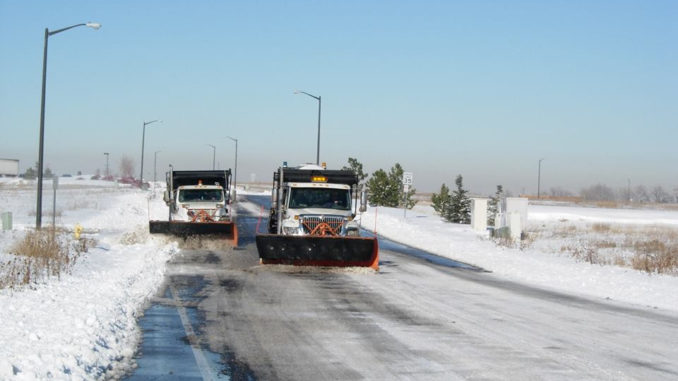
Being Prepared and Knowing What to Expect Help Everyone Weather a Storm a Little Better
After a record-breaking hot summer, it’s hard to imagine, but the snow season is here. Residents need to be aware of the City’s snow plan, so they are prepared. Before a storm arrives, the City’s Public Works Department will place de-icer on the roadways. Once more than an inch of snow has accumulated, plows are dispatched.
The City’s Snow Plan was designed to make the best use of resources to accommodate snow accumulation. Winter snowfall totals in Loveland typically measure in manageable inches rather than staggering feet. During any snowstorm, most of Public Work’s resources – drivers, snowplows, and de-icing chemicals – are initially devoted to making arterial roads, called ‘Priority 1 Routes’ in our snow plan, passable. Since those roads carry the greatest number of travelers driving at the highest speeds, they need to be as safe as possible and ensure access for emergency vehicles.
The goal is to continue working until roadways are mostly bare across all travel lanes. At that point, crews begin to focus on collector or ‘Priority 2’ routes. These streets connect to main Priority 1 routes and include roads to schools. During typical snowstorms, the City focuses on Priority 1 and 2 roadways and relies on traffic and natural melting to clear residential streets. In the case of an extreme storm like the one last March, the city manager and/or public works director can declare a snow emergency. When this happens, the City enlists trash truck crews to help plow one lane on Priority 3 residential streets to accommodate emergency vehicles and provide residential access. Loveland is the only Front Range City that helps plow residential streets during extreme storms. Plows do create windrows that can block driveways, but to clear over 30,000 driveways would consume more City resources than are available.
Per the Loveland City code, clearing sidewalks following snowstorms is always the responsibility of the home or property owner. Residents are asked to clear snow from sidewalks as soon as possible, but no later than 24 hours after the snow has stopped falling. This prevents snow from turning into an icy hazard for pedestrians. Crews will remove snow from sidewalks along Priority 1 routes since plowing operations cover them with snow. However, this only happens once the plow crews are done. The same staff that plows the streets does sidewalk snow removal.
Residents should always shovel snow into the yard and never into the street or gutter – which is illegal and hazardous for snowplows. Snow pushed into streets creates hazards, including freezing and slick conditions, which could impede traffic or cause accidents. If plows or other vehicles hit a pile of snow and ice in the street or gutter, they can be pushed back or sideways into traffic lanes and potentially hit passing or parked cars.
Support Northern Colorado Journalism
Show your support for North Forty News by helping us produce more content. It's a kind and simple gesture that will help us continue to bring more content to you.
BONUS - Donors get a link in their receipt to sign up for our once-per-week instant text messaging alert. Get your e-copy of North Forty News the moment it is released!
Click to Donate
